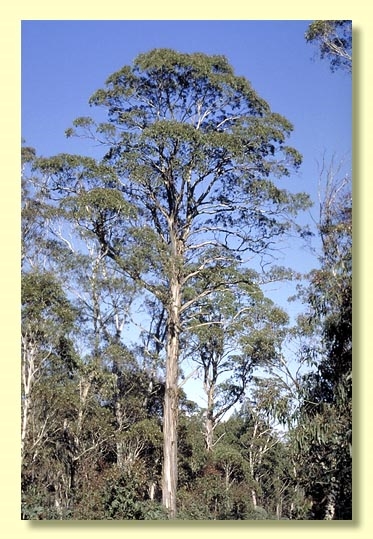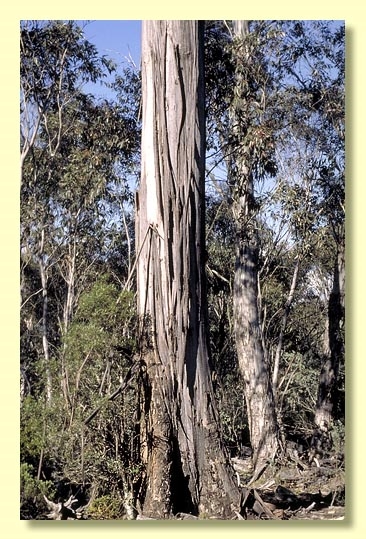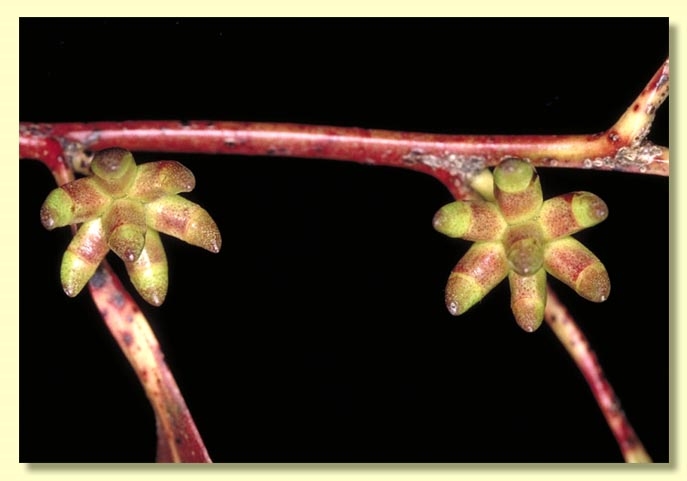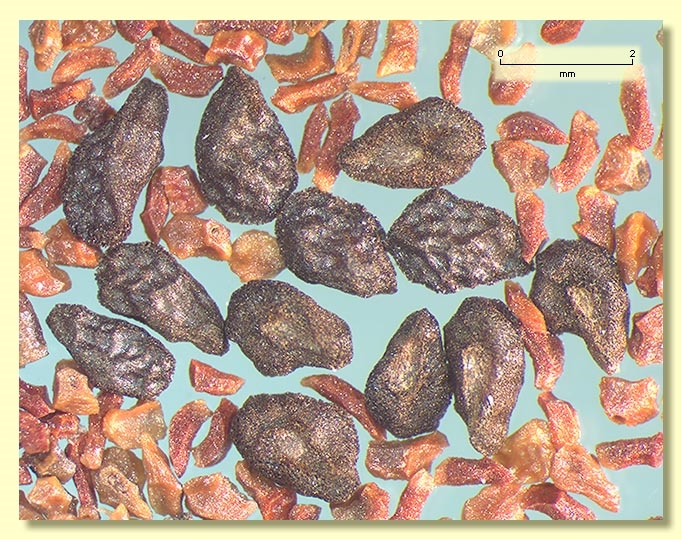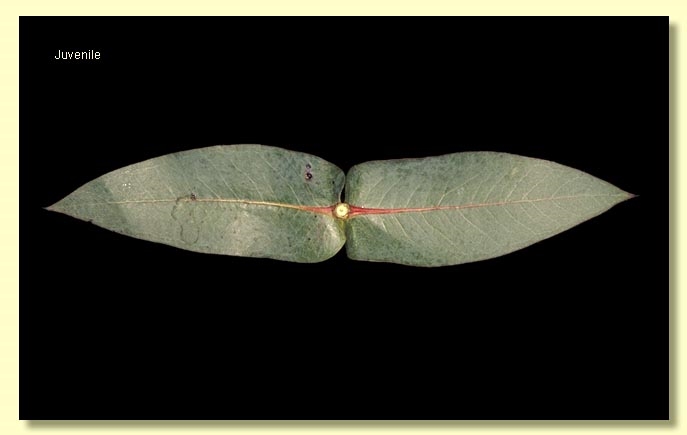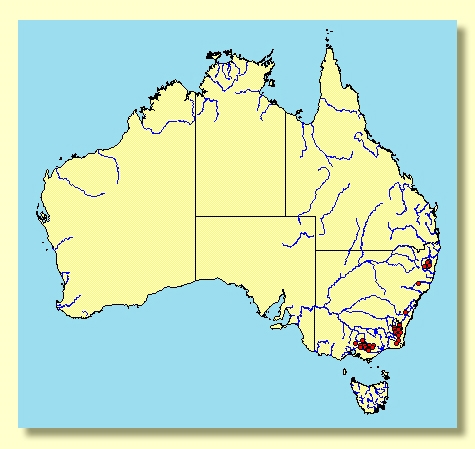Euclid - Online edition
Eucalyptus nitens
Eucalyptus | Symphyomyrtus | Maidenaria | Euryotae | Globulares | Remanentes
Eucalyptus goniocalyx var. nitens H.Deane & Maiden, Proc. Linn. Soc. New South Wales 24: 463 (1899). T: Delegate R., NSW, May 1889, W.Bäuerlen s.n.; lecto: NSW, fide J.H.Maiden, loc.cit.
Tree to 70 m tall. Lignotuber absent, epicormic buds present.
Bark smooth throughout or with a thin stocking of rough grey bark for basal 1 m of trunk; smooth bark predominantly pale grey to greenish-grey but with patches of white, cream or pale brown with horizontal black scars sometimes present; crown often ribbony.
Juvenile growth (coppice or field seedlings to 50 cm): stem square in cross-section and prominently winged, glaucous or non-glaucous; juvenile leaves opposite and sessile for many pairs (until sapling stage), ovate to lanceolate, 6.5–11(18) cm long, 2.8–5.5(9.5) cm wide, amplexicaul, apex pointed, usually blue-green or glaucous.
Adult leaves alternate, petiole 1–4 cm long; blade lanceolate to falcate, 10–30 cm long, 1.5–4 cm wide, base tapering to petiole, margin entire, concolorous, or slightly discolorous, glossy, green, side-veins greater than 45° to midrib, moderately to densely reticulate with erose veinlets, intramarginal vein parallel to and well removed from margin (sometimes doubled, the outer being close to margin and less prominent), oil glands usually obscure.
Inflorescence axillary unbranched, peduncles 0.5–1.5 cm long, buds 7 per umbel, sessile. Mature buds oblong to ovoid, 0.6–0.7 cm long, 0.3–0.4 cm wide, green and pink, often slightly angled longitudinally, scar present, operculum conical, stamens inflexed or irregularly flexed, anthers cuboid to oblong, versatile, dorsifixed, dehiscing by longitudinal slits (non-confluent), style long or short, stigma blunt, locules 3 or 4, the placentae each with 4 vertical ovule rows. Flowers white.
Fruit sessile, cup-shaped to barrel-shaped, 0.4–0.7 cm long, 0.4–0.7 cm wide, faintly angled longitudinally, disc descending, valves 3 or 4, slightly exserted or near rim level.
Seeds black, brown or grey, 1.5–2.5 mm long, ovoid or flattened-ovoid, often pointed at one end, lacunose, dorsal surface shallowly pitted, hilum ventral.
Cultivated seedlings (measured at ca node 10): cotyledons bilobed; stems square in cross-section and winged, glaucous; leaves opposite and sessile for many nodes, cordate, 4–10 cm long, 2–4 cm wide, amplexicaul, margin entire, apex pointed, dull, glaucous or blue-grey.
Flowering has been recorded in January, February and March.
An important forestry species in Victoria and southern New South Wales, and plantation species in Tasmania. Timber is used for general building construction, flooring, joinery, panelling, furniture and pulp, and the species at times produces a honey flow.
A tall tree of high country in New South Wales at Point Lookout, Majors Point, Barren Mountain and Barrington Tops in northern New South Wales, and in southern New South Wales from Parkers Gap south to central eastern Victoria as far west as the Blue Range, Mt Monda and Mt Torbreck and south to Mt Erica. E. nitens has more or less smooth bark, glossy green leaves and small, sessile buds and fruit in sevens. Coppice growth is conspicuous with opposite, sessile leaves persisting to sapling stage. It is most closely related to E. denticulata of the Errinundra Plateau, Mt Kaye and Mt Tennyson in eastern Victoria and in Bondi State Forest in far south-eastern New South Wales. In situations where both species occur near each other, there is some intergradation. In E. denticulata the juvenile stage is less prolonged, the adult leaves are toothed along the edges with lenticels (leaf margin entire in E. nitens), and the outer operculum does not dehisce as a whole cone but appears to be persistent with a reduced, somewhat deformed, inner operculum at the tip (outer operculum completely shed leaving an operculum scar in E. nitens).
Eucalyptus nitens belongs in Eucalyptus subgenus Symphyomyrtus section Maidenaria, a large group of species more or less restricted to south-eastern Australia, characterised by bilobed cotyledons, simple axillary inflorescences, buds with two opercula, stamens with versatile anthers and flattened seeds with a ventral hilum. Within this section, E. nitens belongs in series Globulares subseries Remanentes, having large, sessile, glaucous or non-glaucous, juvenile leaves opposite for many pairs on square, winged stems, small buds in clusters of seven and small fruit with descending disc.

